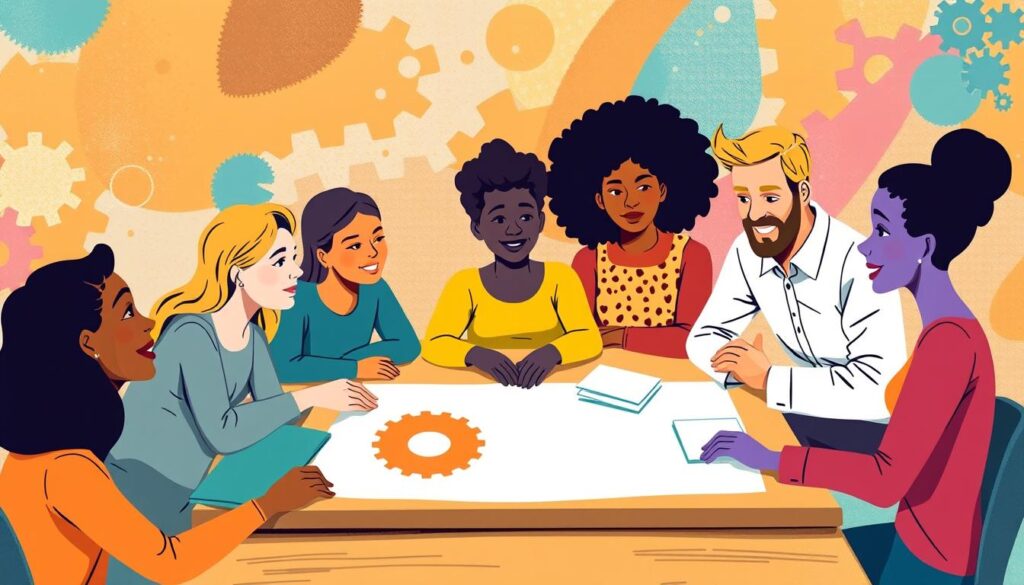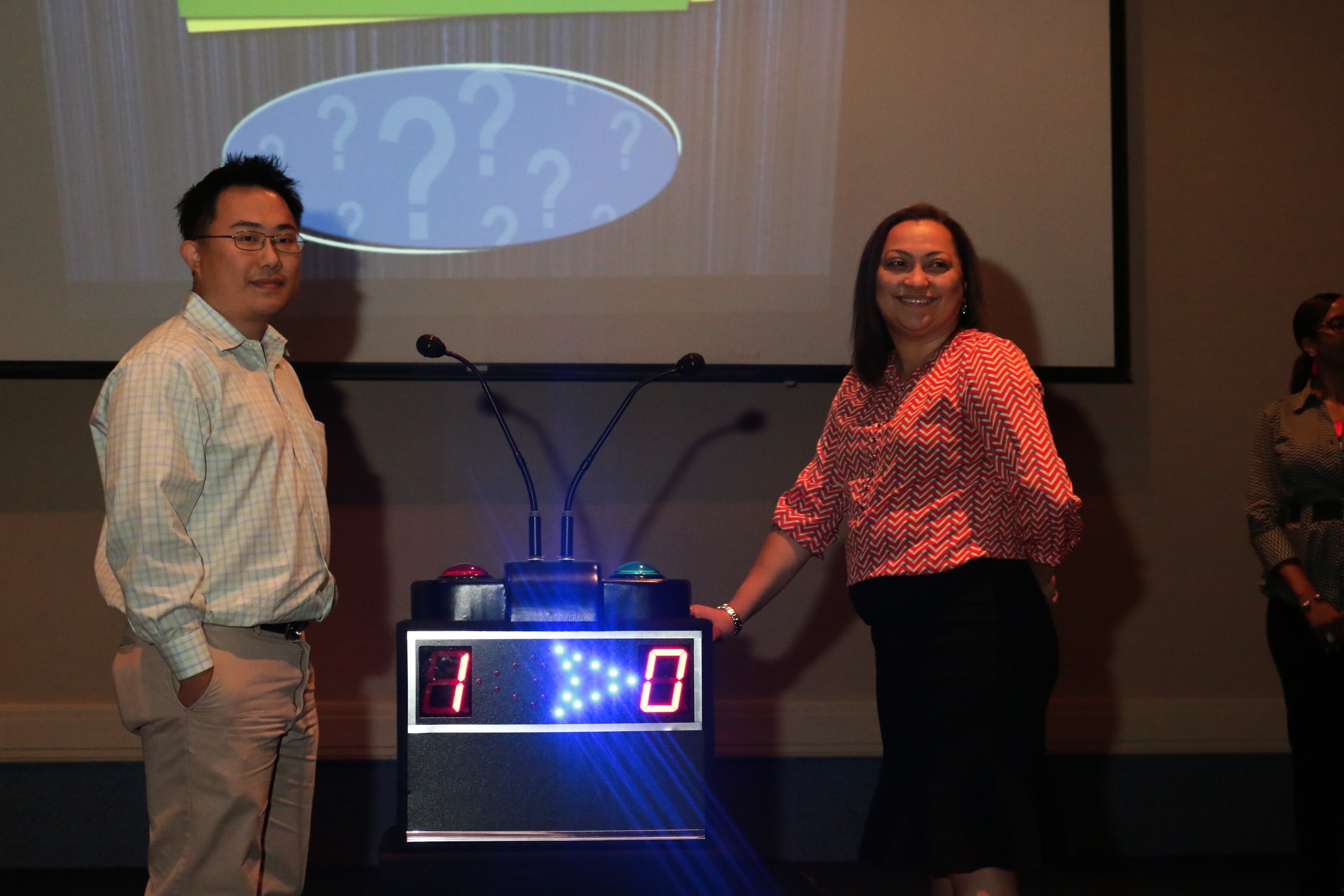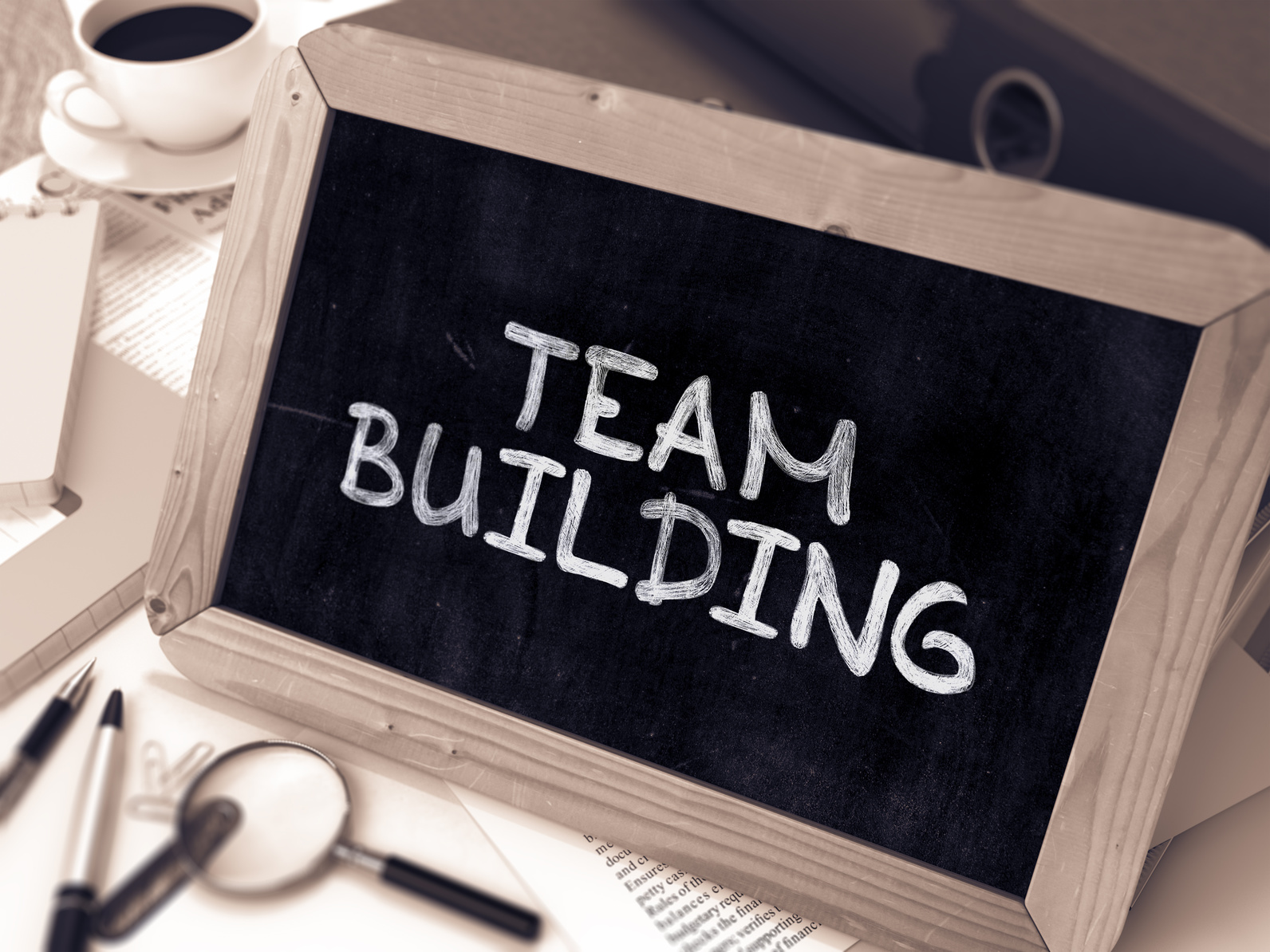Many think team building started with the rise of corporate culture. But, a surprising fact is that the origins of teamwork go back to ancient times. These early civilizations needed to work together to survive and advance.
Think of the pyramids, built through early teamwork. This team-building history shows how teamwork has evolved. It has changed as much as the societies it has shaped.
Exploring this topic, you’ll see how teamwork has grown. It’s a story of human ambition and how we work together. Knowing this history helps us see the power of working together in any field.
Key Takeaways
- The concept of team building extends far beyond the modern-day office, linking back to early human history.
- Early forms of teamwork were crucial to the achievements of ancient civilizations.
- Each stage of team building history reflects the societal and organizational landscape of its era.
- An in-depth look at the origins of teamwork can provide deeper understanding of modern team dynamics.
- Recognizing the transition from informal partnerships to structured team development programs enriches our perspective on collaboration.
The Evolution of Team Building: A Comprehensive Overview
Team building has changed a lot over time. It started with simple group efforts and now includes advanced strategies. These changes help teams work better together and improve their work environment.
From Early Group Dynamics to Modern Corporate Strategy
Team building has roots in ancient times. Back then, working together was key for survival. Now, companies use team building to build stronger teams and work more efficiently.
The Influence of Industrialization on Team Building
Industrialization changed how work was organized. It led to the use of team building to make work more efficient. This focus on productivity and efficiency is still important today.
Key Philosophies That Shaped Team Building Principles
Elton Mayo’s work, like the Hawthorne Studies, was very influential. He showed how important social relationships and employee happiness are at work. His ideas led to the team building strategies we use today.
Team Building History: Unfolding the Past
The story of team building background goes way back, deep into human history. It’s about working together and achieving great things. Each part of this long history has added something special to what we call effective team building today.
At first, people worked together just to survive. Ancient groups hunted together to feed their families. Later, as societies grew, so did the need for teamwork in work.
The idea of team bonding events started in the military. It was used to make teams work better together. Then, companies started using these ideas to improve teamwork and work better together.
The table below shows how teamwork has changed from ancient times to today’s corporate world.
| Period | Focus of Team Building | Impact on Society |
|---|---|---|
| Prehistoric Times | Survival and Hunting | Establishment of community roles and teamwork dynamics |
| Industrial Revolution | Workstream Efficiency | Rise of structured factory work and labor organization |
| 20th Century | Corporate Efficiency and Morale | Introduction of team bonding retreats and workshops |
| 21st Century | Global and Virtual Team Integration | Emphasis on cross-cultural teams and digital collaboration tools |
Knowing this history helps us see why effective team building is key for businesses today. It shows how teamwork has helped people achieve great things over time.
Understanding the Psychological Foundations of Team Building
Exploring the psychology behind teamwork is key to unlocking a team’s full potential. This section looks at how motivation, engagement, leadership, and communication are crucial. They help strengthen team building strategies and improve team performance.
The Role of Motivation and Engagement in Team Success
Motivation is vital for team members to work well together. Engaged teams are more productive and creative. This is important for successful team development programs. Leaders can improve satisfaction and output by understanding what motivates each team member.
Concepts of Leadership in Building Effective Teams
Leadership shapes the team’s direction and environment. Different leadership styles can greatly affect team cohesion. Good leaders know their impact and value each team member’s unique contributions. This creates a respectful and collaborative team atmosphere.
Communication Patterns That Enhance Team Dynamics
Clear communication is essential for strong team bonds. Good team building strategies encourage open communication. This allows for the exchange of feedback, ideas, and concerns. It improves team dynamics and ensures everyone is working towards the same goals.
Using motivational theories, leadership approaches, and communication tactics is vital. These elements help create resilient and efficient teams. By focusing on these psychological foundations, organizations can achieve their goals through effective team building strategies.
How the Hawthorne Studies Revolutionized Team Development Programs
The Hawthorne studies, led by Elton Mayo in the late 1920s and early 1930s, are key to today’s behavioral studies. These workplace experiments at Western Electric’s Hawthorne Works in Cicero, Illinois changed how we view productivity research and managing employees. Mayo and his team showed how psychological and social factors greatly affect how well employees do their jobs.
Behavioral Insights from the Hawthorne Experiments
The studies started to look at how work conditions affect productivity but soon focused on group dynamics and morale. These findings led to programs that improve work environments and create a supportive culture. This shift from just looking at physical work conditions to the whole work environment is crucial.
Legacy of the Hawthorne Studies in Modern Team Building
Even today, the Hawthorne studies’ impact is seen in team development programs around the world. These studies led to a big change in how workplaces are managed, focusing more on employees. Now, team development aims to improve communication and teamwork, not just by pushing people harder but by empowering them and teaching emotional intelligence.
Many modern team-building strategies still rely on the insights from the Hawthorne studies. For example, corporate events often include activities that boost social interaction and challenge roles, inspired by Mayo’s research.

In short, the Hawthorne studies have greatly influenced modern workplace management and team development. They moved the focus from just the mechanical to the psychological and social aspects of work. This shift highlights the importance of employee happiness and well-being in boosting productivity.
Exploring Different Team Building Techniques Across Cultures
It’s key to understand team bonding activities in various cultures for better effective collaboration in today’s global market. The goals of improving communication and productivity are the same everywhere. But, the ways to get there differ a lot between cultures.
When building a strong corporate culture, it’s important to know the different views on teamwork in Eastern and Western cultures. Each culture brings its own special insights. Combining these can make your team more united and lively.
Eastern vs. Western Approaches to Teamwork
In Eastern cultures, teamwork is all about group harmony and success together. This shows in their team building methods, which focus on unity and respect for leaders. On the other hand, Western cultures value individual success and creativity. Their team building activities aim to improve open communication and challenge the status quo.
Global Best Practices in Team Building Activities
Mixing the strengths of different cultures is a smart way to approach team building. Here are some global best practices that work well:
- Interactive problem-solving exercises that encourage diverse perspectives.
- Role-playing scenarios that build empathy and understanding among team members.
- Outdoor team bonding activities that blend physical challenges with strategic thinking.
By learning from these different methods, you can improve effective collaboration and create a corporate culture that welcomes everyone. For more tips on building a strong team, check out this resource.
The Impact of Total Quality Management on Team Building Strategies
Total quality management (TQM) has changed how we manage organizations. It focuses on quality control and continuous improvement. This approach is key for building teams, focusing on the journey, not just the destination.
In TQM, employee involvement is key. Every team member plays a crucial role in quality. This is a big change from the past, where only a few were in charge of quality.
This change makes team building different. It makes everyone feel they own the success of the team. Happy employees work better and bring new ideas.
One way to keep teams involved is through activities that solve real problems. Doing team building exercises helps teams work better together. This is important for TQM.
Using TQM in team building does more than improve operations. It builds a culture of quality in your whole organization. Here’s how it has helped teams:
| Aspect | Before TQM Implementation | After TQM Integration |
|---|---|---|
| Quality Awareness | Low | High |
| Employee Involvement | Minimal | Significant |
| Continuous Improvement | Occasional | Systematic |
| Team Collaboration | Siloed | Integrated |
By adopting total quality management, you improve productivity and create a culture of growth. This gives you a lasting edge in the market, thanks to a well-coordinated team strategy.
Virtual Team Building: Adapting to the Digital Age
The rise of remote teamwork has changed how we build teams. Now, virtual team building is key. As businesses work online, it’s vital to keep teams aligned through online collaboration. Here’s a look at the challenges and ways to boost digital engagement in virtual teams.
Challenges and Solutions for Online Team Collaboration
Remote teams face unique hurdles, like missing face-to-face interactions. Digital communication can also be tricky. To overcome these, use online tools and set clear communication rules. Regular virtual meetings and updates help keep everyone on the same page.
Effective Virtual Team Building Activities and Tools
Virtual activities are crucial for team engagement. Activities like webinars and online games help teams feel connected. Tools like Zoom, Slack, and Asana make these activities possible and help manage projects. Let’s dive into some top activities and tools for a strong team culture.
- Virtual Ice Breakers: Start meetings with fun questions or games to relax and build rapport.
- Online Workshops: Regular workshops or skill-sharing sessions boost confidence and personal growth.
- Virtual Team Challenges: Challenges like scavenger hunts or puzzles require teamwork and can be tracked with tools like Trello.
Using digital engagement strategies in virtual team building is key. It ensures teams are productive and happy, which is essential in remote work.
| Activity | Tool | Description |
|---|---|---|
| Online Team Lunches | Zoom | Weekly virtual lunches to discuss non-work topics and bond over shared interests. |
| Collaborative Document Editing | Google Docs | Allows multiple team members to work on documents in real-time, enhancing collaboration. |
| Task Management | Asana | Tracks tasks and projects, assigns responsibilities, and sets deadlines for better project management. |
Personality-Based Team Building: Crafting Synergistic Teams
In today’s fast-paced work world, personality-based team building is key. It helps teams work well together by using everyone’s strengths. By knowing and using psychological testing, teams can work better together.
Using Personality Assessments to Enhance Team Composition
Personality assessments are crucial for team success. They show how team members behave and what motivates them. This helps leaders match tasks with the right people, making teams happier and more efficient.
Tools like the Myers-Briggs Type Indicator and DISC Assessments help make these decisions.
The Science Behind Personality Dynamics in Teams
How personalities mix in a team affects its success. Studies show that knowing these dynamics helps teams work better together. Teams that match well have better communication and solve problems more effectively.
Here’s how different personalities fit into team roles:
| Personality Trait | Preferable Team Role | Strengths |
|---|---|---|
| Extroversion | Team Leader | Drives discussions and energizes team |
| Agreeableness | Team Supporter | Enhances cooperation and mediates conflicts |
| Conscientiousness | Quality Checker | Ensures tasks are completed thoroughly |
| Neuroticism | Risk Assessor | Foresees potential challenges and plans contingency |
| Openness | Creative Thinker | Brings innovative ideas and strategies |

Understanding and using these traits helps teams grow and succeed. Personality-based team building boosts individual growth and team success. It’s a vital part of modern management.
Merging Personal Development and Team Building for Optimal Performance
Combining personal development and team building boosts team performance and individual skills. It makes work more satisfying. By adding employee training and personal growth, teams can grow together. This creates a place where everyone can advance in their careers.
When personal development meets team goals, everyone gets better. This helps the team work better together. It’s a key to lasting success for the whole organization.
Professional Growth as a Catalyst for Team Success
When teams focus on growing together, they do better. Team members who feel their goals are supported work harder. This turns everyday tasks into chances to grow and succeed.
Integrating Skill Enhancement in Team Development Efforts
Training programs are vital for keeping team skills up to date. Adding personal development to team plans boosts everyone’s skills. This leads to better results for the team.
With the right training, teams can achieve both personal and shared goals. This makes professional growth a part of daily work. It’s not just encouraged; it’s a key part of the team’s success.
Measuring the Efficacy of Team Building with Quantitative Data
Understanding the true value of team building activities is key. It depends on measuring their impact with quantitative data and team performance metrics. As organizations spend a lot on these activities, using statistical analysis is vital to see if they’re worth it.
Team building statistics give us a glimpse into how these activities affect business. By looking at research findings and using team dynamics research, we can find patterns. These patterns show what’s working and what needs work in our team development plans.
Quantitative measures provide an objective basis for evaluating the efficacy of team building programs, allowing leaders to make informed decisions regarding future investments in team development.
- Employee performance before and after team building sessions
- Improvement in communication shown by faster project completion
- Employee satisfaction ratings before and after team engagement exercises
- Retention rates linked to regular team building activities
These metrics show the immediate benefits and help plan better for the future. Tracking these regularly makes sure team building stays a key part of growing the organization.
Conclusion
As we’ve explored the history of team building, it’s clear that strong teams are key to success. The past shows how team building boosts productivity and makes employees happy. From the early days of teamwork to today’s virtual teams, the benefits are clear.
Team building offers many advantages, from better communication to solving problems quickly. These strategic advantages show how important it is for teams to work well together. This history guides us to improve employee satisfaction and team performance.
The future of team building looks exciting, with new technologies and ways of working. We expect trends to keep the human element in team building. Understanding this history can help your team thrive, improving your workplace and results.









